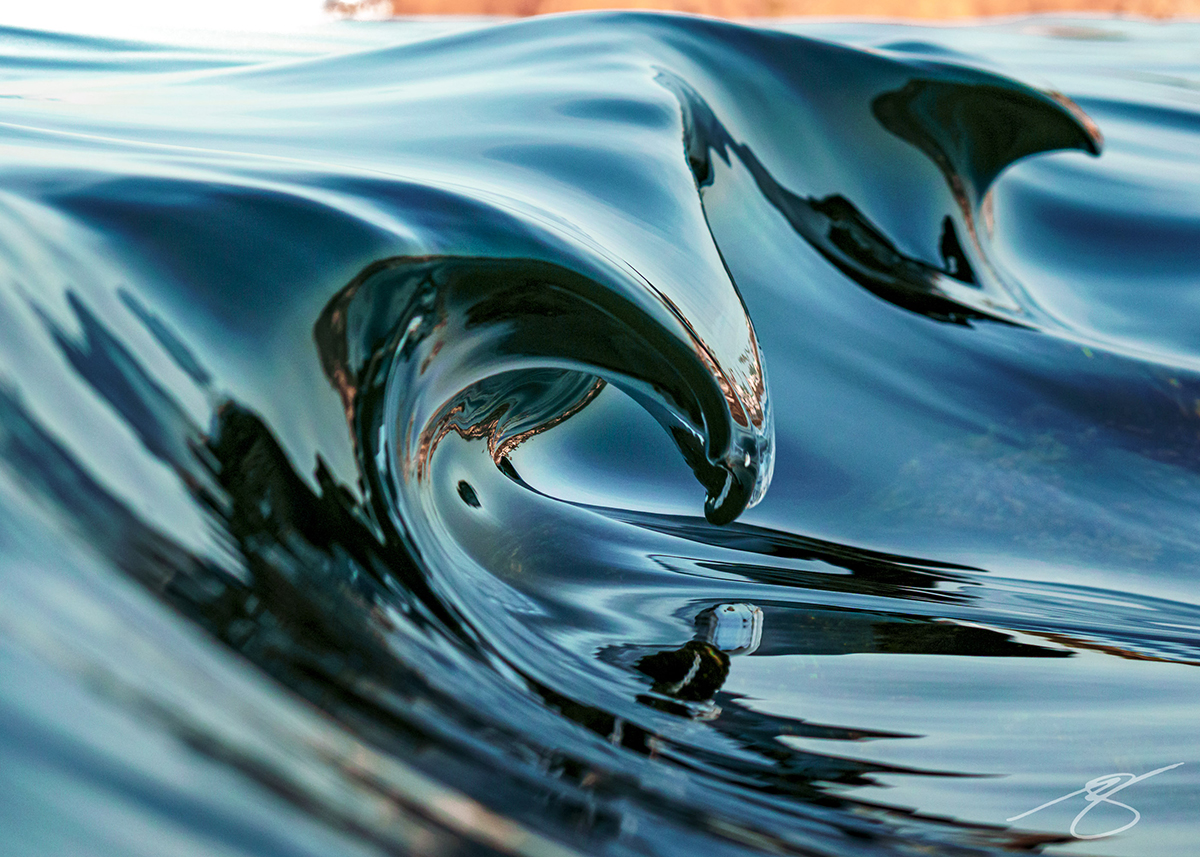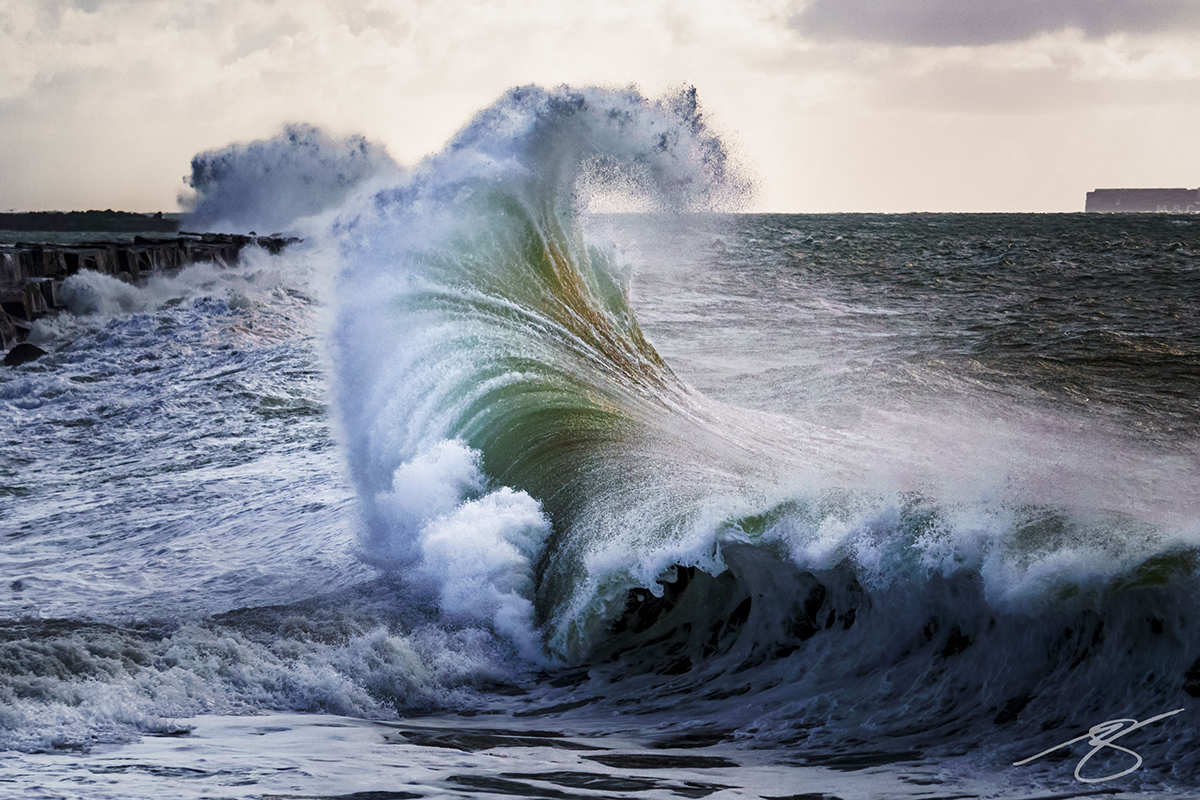By Jenn Gidman
Images by Beau Johnston
Beau Johnston achieves what he calls ‘wave portraiture’ with his Tamron 11-20mm F/2.8 and 17-70mm F/2.8 VC lenses.
Growing up in Orange County, California, Beau Johnston would head to the beach nearly every weekend with his dad, where he’d spend all day in the water on his bodyboard. Beau’s love of the ocean continued into adulthood, and about 10 years ago, photography became introduced into the mix.
“Using a small GoPro point-and-shoot, I started taking pictures of the beach and surf,” Beau says. “Even if the waves weren’t ideal for bodyboarding, I knew I could still capture some photos while I was down near the water and make the best of it.”
That kick-started Beau’s passion for ocean photography—“and once I get passionate about something, I’m the type of person who will really crack it open and do a ton of research,” he says. “I’ve never taken any courses on doing this; I’m completely self-taught. But you can only do so much with a GoPro, so I soon stepped up to a Sony mirrorless camera system, found a water housing sponsor, and started looking into interchangeable lenses.”
Now, encased along with Beau’s camera in its underwater housing is either his Tamron 11-20mm F/2.8 Di III-A RXD ultra-wide-angle lens or 17-70mm F/2.8 Di III-A VC RXD zoom. “The 11-20 is the lens I use when I’m in the waves and trying to get up close and personal with them, without using my viewfinder,” he says. “My housing is a one-handed operation, where I press a button like a trigger. I’ll stick my arm out and shove it into the barrel of a wave to capture that particular effect. Because I can’t use the zoom when it’s in the housing, I usually set it between 16mm and 20mm, though I do occasionally use the 11mm end of the lens.”

11-20mm (11mm), F/6.3, 1/1250 sec., ISO 160
The 17-70, meanwhile, is Beau’s workhorse. “I can shoot really wide with it, but then if I want to zoom in a wave, I can do so,” he says. “Plus, because I tend to shoot in a lot of low-light situations, including predawn and post-sunset, the maximum F/2.8 aperture on both of those lenses is incredibly useful.”

17-70mm (50mm), F/10, 1/2000 sec., ISO 500
Beau uses those two Tamron lenses to create his unique art, which he calls “wave portraiture.” “I like to show the different looks and moods of waves,” he says. “Usually they move so fast that the human eye can’t take it all in and comprehend what’s going on visually. Using a high shutter speed to freeze that action, however, I can show what the eye can’t. As far as my style goes, I like to think of it as a form of enhanced naturalism. I want my photos to look real, but also to be visually captivating to the viewer.”

11-20mm (16mm), F/4.5, 1/1000 sec., ISO 1250
Once Beau began posting his ocean and wave photos to Instagram, people started inquiring as to whether he sold prints. “It started out small, where I’d go to Costco and print out an 8×10 for someone,” he says. “It grew from there, until one day I sold my first big fine-art work—a 40×90-inch metal piece. It opened my eyes to how I could make some decent money doing what I loved.”
Beau takes the vast majority of his photos at sunrise. “At that time of day, several variables come into play with the ocean surfaces,” he says. “First, the winds aren’t as strong here in the morning, which is better for the surface conditions in terms of my photography. In the afternoon, the wind picks up and the surface conditions can get too choppy. From a personal standpoint, I also love having the beach all to myself after most of the crowds have left. I treat it as a meditation session.”

17-70mm (70mm), F/6.3, 1/4000 sec., ISO 100
The lighting at that time of day is also appealing. “The 30 minutes before the sun breaks over the horizon is especially nice, because the rays might be shining up into the clouds,” Beau says. “Which means if the clouds are turning those beautiful sunrise colors, that will reflect down onto the waves. Then, once the sun is visible on the horizon, I’ll get things like sparkles, reflections, and sun flares. Right after that happens, however, I only generally have a 30- to 45-minute window before the light gets too strong and my images start to get blown out.”

11-20mm (16mm), F/7.1, 1/1600 sec., ISO 160
Beau tries to mix up his compositions, based on what he likes personally and what he also knows will sell. “Every single wave I shoot will have a different foreground or background, or sometimes it will be just the water and the sky, or even just the water if I fill the frame,” he says. “Images of the ocean that include palm trees in the background, for instance, offers a classic surfing vibe, and people seem to respond to pictures like that. Other times, I concentrate on that wave portraiture I talked about earlier, where I’m more zoomed in on the water so that it’s almost a macro shot. In those instances, the wave is my focus. I’ll even use a crop tool to see what different angles and looks I can achieve in the photo.”

17-70mm (70mm), F/5.0, 1/3200 sec., ISO 100
With his ISO in auto at between 100 and 400, Beau uses a shutter speed of at least 1/800 of a second to make sure he’s able to capture the waves without any blur. “Your camera also needs to have the capability of shooting a bare minimum of eight frames per second,” he says. “The waves are moving so fast, and I have to rapid-fire as they come through. I’m typically firing away as the wave is breaking over me, and I’m usually set to center focus, so my autofocus is continuously trying to grab that focus in the center of the frame.”

17-70mm (50mm), F/5.0, 1/1250 sec., ISO 100
There’s some luck involved, too. “You have to pick a spot and wait, and hopefully it’s the right spot, in terms of how the waves come in,” Beau says. “Being a bodyboarder helps, because I have an eye for knowing what a perfect wave looks like as it’s rolling in. When I get home and start going through the images, I’ll pick out the cream of the crop from those photo bursts.”
To achieve his enhanced naturalistic style, Beau tries not to overdo things when it comes to editing. “My main focus is on where I want to draw your eyes into within the composition,” he says. “For instance, I’ll use Radial Filters to draw light to a specific part of the wave and then invert it to increase that light. So in the lip of a wave, if the sun is shining in the top lip and it’s clear water, you get those rays coming through the water. I like to accentuate those rays.”

17-70mm (50mm), F/5.6, 1/1600 sec., ISO 100
He’ll also tweak the vibrance and hues, especially if the shadowed areas aren’t showing much detail. “I don’t like to oversaturate things to where the image starts to look fake,” he says. “I don’t really have a set parameter for how I approach a picture; each one is different. I let the photo speak to me so I can get a feel for what I want to do. That’s where the ‘art’ part of it comes in for me.”
To see more of Beau Johnston’s work, go to his website.